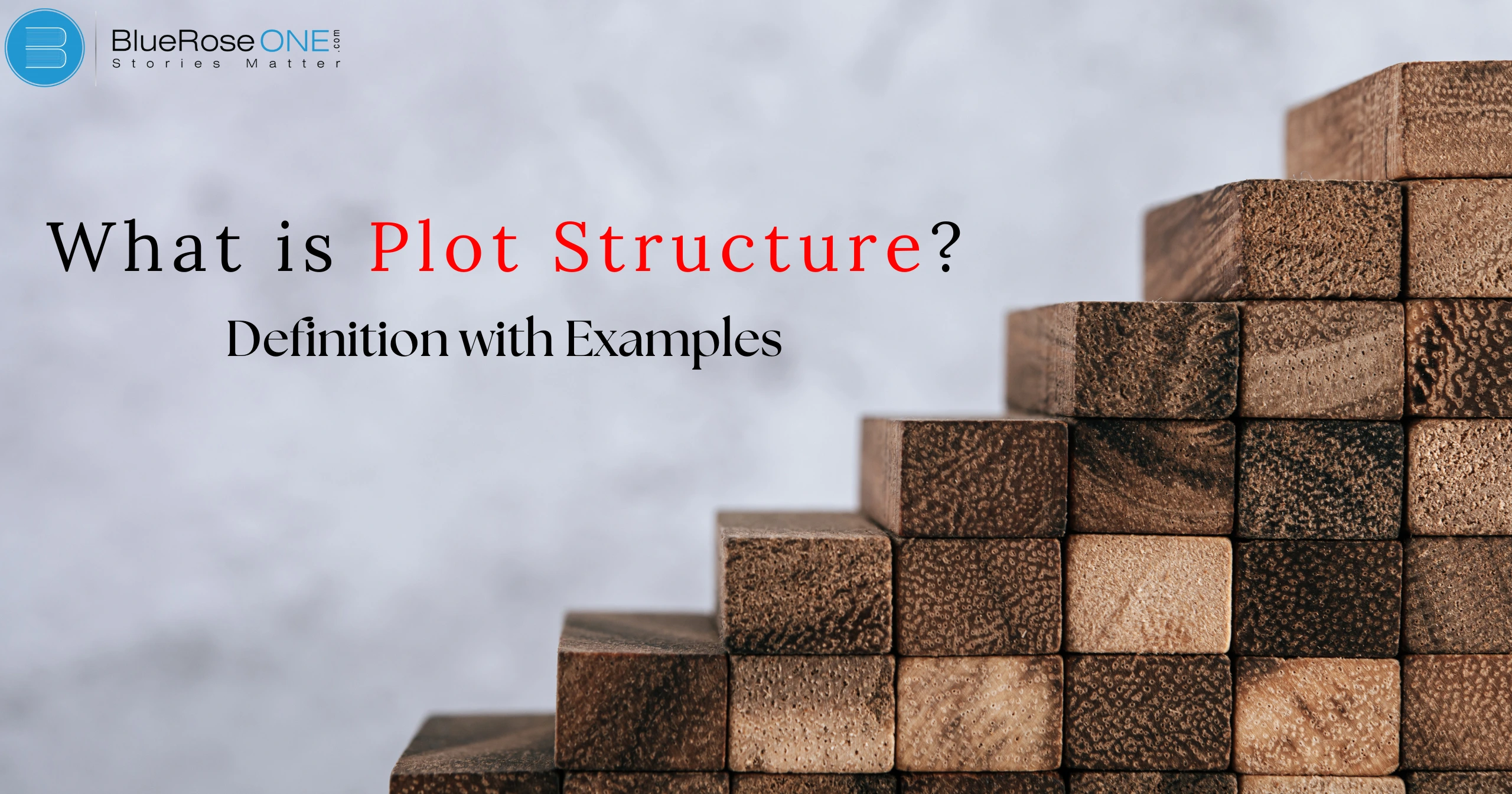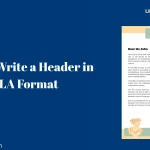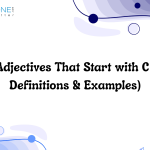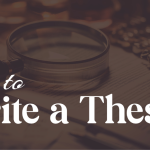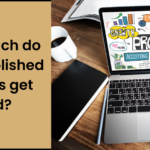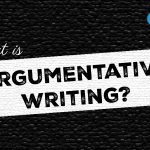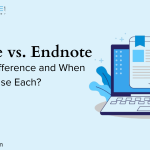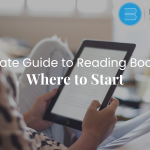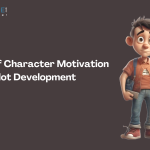Plot Structure – Every memorable story has a storyline framework. This blueprint determines how events evolve in a narrative, giving it rhythm and meaning.
Why Plot Structure Matters in Storytelling
Plot structure is important in storytelling because it offers your story a clear path and keeps readers interested. A well-structured story arranges events in a way that heightens tension, develops characters, and provides satisfying resolutions. Without a good structure, stories might feel chaotic or without purpose, making it difficult for readers to stay engaged. Writers can construct engaging narratives with frameworks such as the three-act structure or the Hero’s Journey that leave a lasting impression on their audience.
Understand the Role of Plot in Fiction
What is Plot Structure?
Plot structure is the organized framework that controls the order of events in a story. It gives a road plan for the story, including stages such as exposition, increasing action, climax, declining action, and resolution. These stages contribute to tension, character development, and a satisfying finale. A well-crafted plot structure guarantees that the story progresses rationally, keeping readers interested. For example, the standard three-act structure splits a story into three sections: preparation, conflict, and resolution.
You may also like: What is Upfront Fiction? Definition, Traits and Examples
Key Elements of a Plot
Exposition: Exposition is the beginning of a story in which the author explains the setting, main characters, and the initial conflict. It gives important background information to assist readers grasp the story’s setting. A well-crafted exposition establishes the tone and context, preparing the audience for what is to come. For example, in The Lion King, the first scene reveals Simba’s birth, royal ancestry, and savanna environment, providing the groundwork for the story’s conflict.
Climax: The climax is the most intense and exciting phase of a story, during which the primary conflict reaches its pinnacle. It is frequently used as a turning moment, resolving crucial conflicts and guiding the plot to its climax. This key moment usually displays the protagonist’s strengths, shortcomings, or growth. For example, in Suzanne Collins’ The Hunger Games, Katniss’ decision to oppose the Capitol’s laws during the final battle is a watershed moment that determines the story’s conclusion.
Falling Action:The falling action is the section of a story that follows the climax and leads to the conclusion. It’s where the climax’s consequences play out and loose ends begin to be tied. This phase frequently brings clarity, demonstrating how characters react to major events and how their journeys begin to wind down. For example, in Harry Potter and the Sorcerer’s Stone, the falling action takes place as Harry recovers in the hospital wing and the mystery is finally disclosed.
Rising Action: Rising action is the part of a story where suspense builds up until the climax. It has events and conflicts that build suspense and keep readers interested. This stage further develops the characters and raises the stakes, demonstrating how they respond to difficulties. For example, in Suzanne Collins’ The Hunger Games, Katniss preparing for the games and overcoming difficulties heightens anticipation, setting up the decisive battle. The increasing action makes the plot more engaging and vibrant.
Resolution:The resolution is the final stage of a story, in which all conflicts are resolved and loose ends are tied. It resolves the important questions raised during the plot and demonstrates the implications of the characters’ choices. The protagonist typically finds closure in the resolve, whether it be a joyful or tragic ending. It is critical for satisfying the audience and bringing the story to a meaningful end.
You may also read: How to Publish a Book? | Publish a Book | BlueRoseOne
You may also read: 100+ Adjectives That Start with C (With Definitions & Examples)
Types of Plot Structures
Freytag’s Pyramid
The Three-Act form is a common plot form used in storytelling. It separates the story into three major sections: setup, conflict, and resolution. Act 1 introduces the major characters and the struggle. Act 2 focuses on the evolution of the conflict, which leads to the story’s climax. Finally, Act 3 brings the story to a fitting end. This structure promotes a clear flow and keeps the audience engaged throughout the story.
Hero’s Journey
One prominent plot structure is the “Hero’s Journey,” which follows a major character through a series of stages, such as being called to adventure, encountering challenges, and eventually returning home altered. This framework is frequently used in fantasy and adventure stories such as The Lord of the Rings and Star Wars. It emphasizes growth and self-discovery, with the hero learning vital lessons through challenges and the guidance of mentors, ultimately leading to personal change.
Circular Narrative
A circular narrative is a plot structure in which the story concludes where it began, resulting in a sense of closure or recurrence. This sort of story frequently emphasizes themes of fate, inevitability, or the passage of time. The characters may mature or develop, yet the ending generally returns to the beginning, although with a fresh perspective. A well-known example is the film The Lion King, in which the main character takes on leadership responsibilities similar to his father’s.
You may also read: What is an Epigraph in Literature? Definition and Examples
Freytag’s Pyramid: The Classic Plot Model
Explanation of Freytag’s Pyramid
Freytag’s Pyramid is a traditional plot structure for organizing a story. It divides the story into five main sections: exposition, rising action, climax, declining action, and resolution. The exposition introduces the people and location. The growing action heightens excitement, building to the climax, the story’s pivotal point. The descending action depicts the aftermath, and the resolution ties up loose ends. This pyramid can help writers construct well-paced, compelling stories with a clear framework.
Real Life Examples in Literature
Shakespeare’s Hamlet perfectly exemplifies this structure, with its intricate buildup and powerful climax.
Three-Act Structure: A Modern Framework
Act 1: Act 1 introduces the world of the story, the main characters, and the central conflict. It sets up the key themes and establishes the protagonist’s goals, motivations, and relationships. By the end of this act, a turning point or event (called the “inciting incident“) pushes the protagonist into a new situation or challenge, marking the transition to Act 2. This act is crucial for grabbing the audience’s attention and establishing the stakes for the rest of the story.
Act 2:Act 2 is the longest of the three acts and is widely regarded as the story’s heart. It begins after the protagonist faces a significant difficulty in Act One. In this portion, they fight to overcome hurdles and face confrontation, which frequently results in a succession of setbacks. This is where characters confront their most difficult challenges, driving them to develop and adapt. Act 2 often concludes with a turning point that propels the story into Act 3, preparing for the final confrontation.
Act 3:Act 3 of the three-act structure contains the story’s climax and resolution. This is where the primary conflict is resolved and any loose ends are tied. The protagonist meets the final obstacle, which frequently results in considerable development or progress. The conclusion depicts the aftermath of the conflict and creates a sense of closure, giving the audience an insight of the characters’ futures. The conclusion brings the story to a satisfactory end.
Popular Examples of the Three-Act Structure
Movies like The Matrix and The Avengers rely on this proven method.
The Hero’s Journey: A Mythical Approach
Stages of the Hero’s Journey
Call to Adventure: The “Call to Adventure” is an important stage in the Hero’s Journey. This is the point at which the hero is asked to leave their ordinary world and embark on a trip full of difficulties and discoveries. This summons is frequently delivered through a messenger, event, or crisis that breaks their daily routine. For example, in The Hobbit, Bilbo Baggins receives a call from Gandalf pushing him to join a quest. It represents the initial step towards transformation.
Trials and Tribulations: “Trials and Tribulations” is an essential stage in the Hero’s Journey. As the hero faces challenges and hurdles, he or she must put their strength, courage, and willpower to the test. These trials frequently include hazardous foes, difficult decisions, or personal conflicts, which help the hero grow and prepare for their final goal. For example, in The Lord of the Rings, Frodo’s journey to destroy the One Ring is fraught with difficulties, teaching him resilience and developing his character into a genuine hero.
Return Home: The “Return Home” is the final part of the Hero’s Journey, in which the hero returns to their normal life, transformed by their experiences. This return frequently results in fresh wisdom or a reward that benefits the community. While there may be difficulties in readjusting to normal life, the hero’s growth makes them stronger and more insightful. For example, in The Lord of the Rings, Frodo returns to the Shire, eternally transformed by his quest, representing human growth via adventure.
You may also like: List of 10 Best Libraries in Surat for Bookworms
How to Build a Strong Plot Structure
Start with a Central Conflict
To create a solid story structure, start with a central conflict. This is the central problem or difficulty that propels the plot and keeps readers engaged. The conflict can be exterior, such as a combat with an enemy, or internal, such as a character experiencing fear or doubt. A defining conflict offers your story meaning, adding suspense and stakes. For example, in The Lion King, Simba’s conflict is his quest to retake his rightful status as king.
Add Key Turning Points
Key turning moments are vital for creating a good plot structure. Turning points are moments in a novel where events change dramatically, keeping readers interested. These moments frequently require the main character to make critical decisions or encounter challenges that alter the story’s trajectory. For example, in The Lion King, Simba’s decision to return to Pride Rock is a watershed moment. These adjustments build suspense and keep the storyline moving, making the story memorable and impactful.
Focus on Resolution
The resolution is the final stage of a storyline in which all loose ends are wrapped up and the story is concluded. This section gives readers a sense of closure by demonstrating how the characters have changed or what they have learnt. A strong resolution addresses the story’s core questions and creates a lasting impact. For example, in The Lion King, Simba becomes king, settling the strife and restoring equilibrium to the Pride Lands.
You may also read: List of Top 10 Famous Ravinder Singh Books of All Time
Conclusion
A well-crafted plot framework is the foundation of any effective narrative. Whether you use Freytag’s Pyramid, the Hero’s Journey, or another method, understanding and mastering plot structure can improve your storytelling.
Frequently Asked Questions
The plot is the sequence of events, while plot structure is how those events are organized.
While rare, some experimental works succeed without traditional structure.
Consider your genre and narrative goals.
Yes, many stories combine elements from multiple frameworks.

